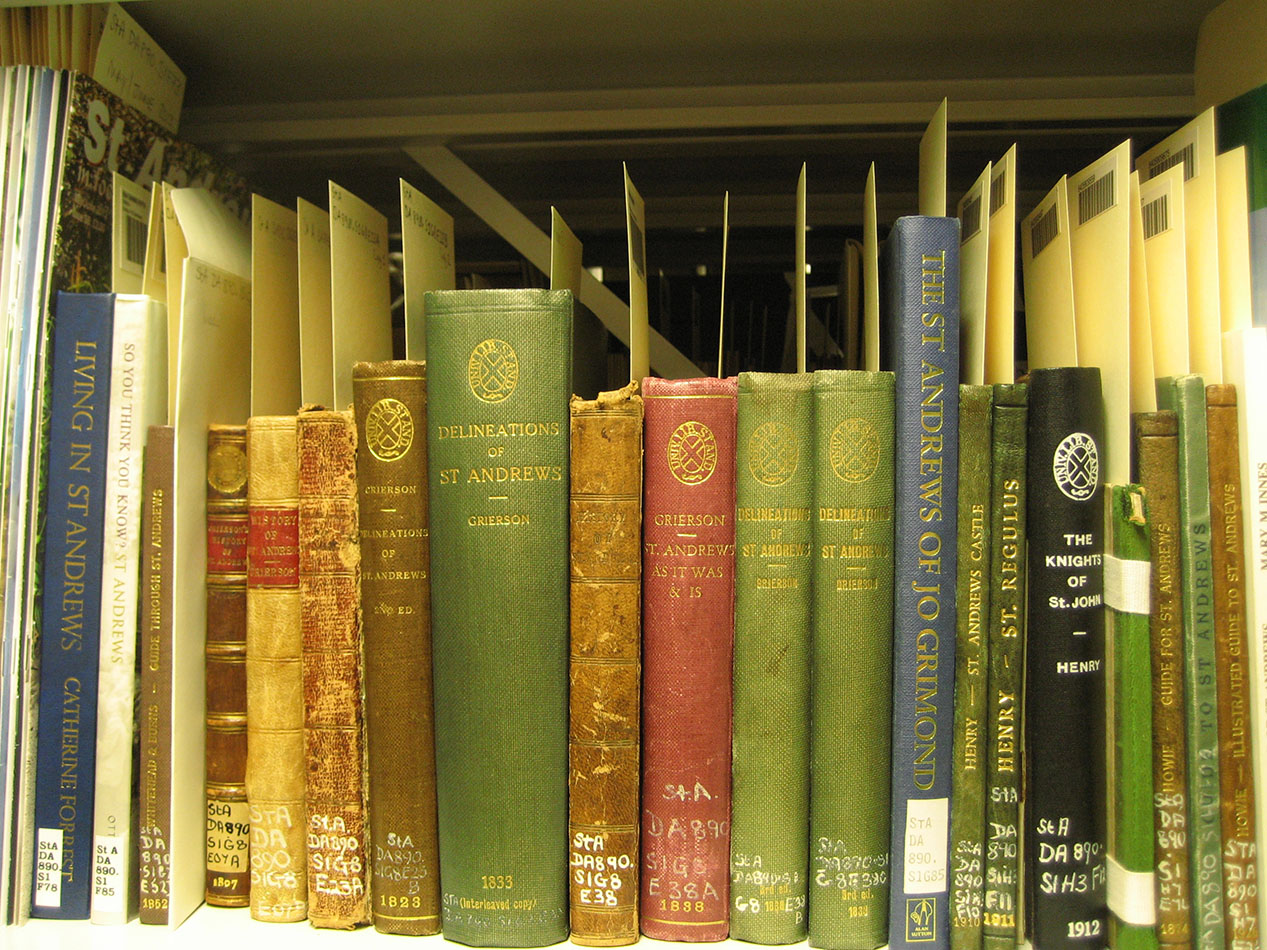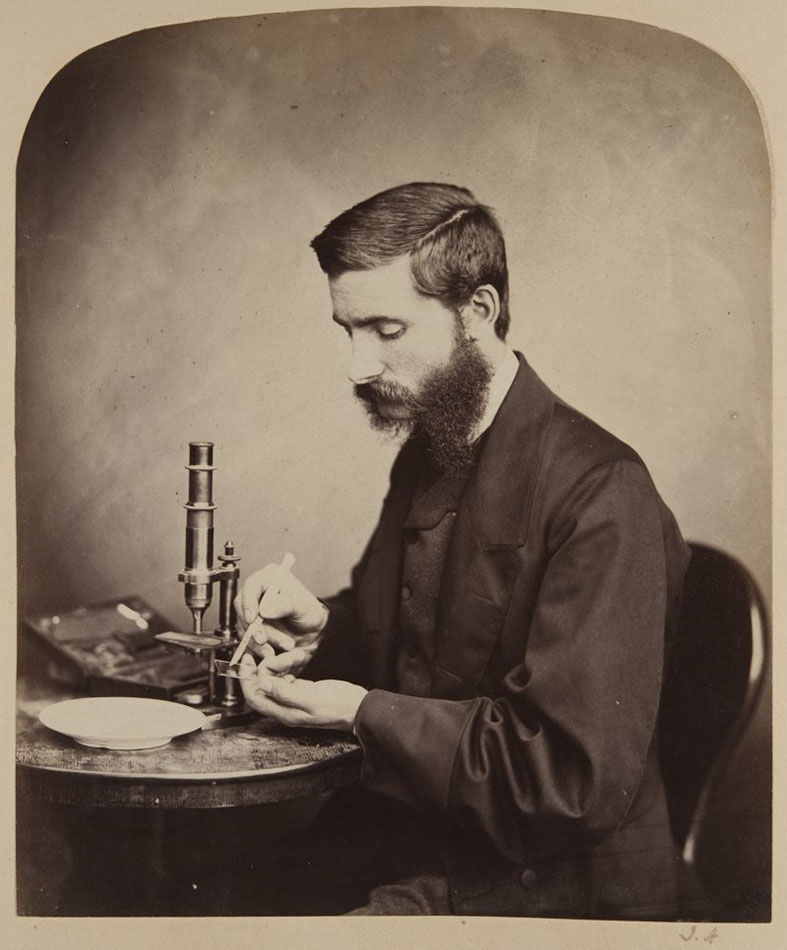Lighting the Past: The St Andrews Collection
Last week the Lighting the Past team finished cataloguing the non-folio items of the St Andrews Collection. With some 2315 bib records and 3926 item records, this is the largest collection to date catalogued by the team, and was completed in only eight and a half weeks.

Unlike the previous two collections (Anderson and Beveridge), the St Andrews Collection does not represent a collection of books belonging to one sole owner – items in this collection cover aspects not only of the university, but also the town itself, and the collection is still being added to. Recent additions include publications such as R. Lamont-Brown’s St Andrews: City by the Northern Sea and the novel Time and Tide by University of St Andrews’ graduate Shirley McKay, the third book featuring Hew Cullan, a 16th century St Andrean lawyer. This blog, however, is concerned with items which we ourselves on Lighting the Past have catalogued, and here are some of the highlights.

Needless to say there are works about the town and its people. Thus we came across Herkless and Hannay’s five volume set of The Archbishops of St Andrews, and works about the Martyrs Patrick Hamilton and George Wishart by John Parker Lawson (StA BX4826.H2L2 and StA BX4826.W5L2E27). Works on the eminent professors of the University are also to be found, such as the Rev. William Neil’s edition of Hugh Cleghorn of Stravithie’s diary; Cleghorn was Professor of Civil and Natural History, 1786-87. Of course, the collection would be incomplete without works concerned with the town itself, such as that by Charles Jobson Lyon, of which there are no less than 4 copies!

Rather interestingly the collection contains some novels which are bound Tête-bêche (meaning ‘head-to-toe’) – this is where two items are bound together, one rotated 180°; so the last page of one backs on to the last (upside down) page of the other. Such items have no back cover, but rather two front covers and a shared spine. Those in the St Andrews Collection are all part of Gebers Dubbeldeckare series, published by Almqvist & Wiksell, with their distinctive black and red enlarged-fingerprint cover designs.

Of course, much of the St Andrews Collection is concerned with the University itself. For those with an historic interest there are the calendars of the Ladies Literate in Arts – a distance learning qualification for women introduced in the 1870s before women were admitted as students to the University of St Andrews. These calendars detail the results and examinations sat by candidates. Student life is told from a student perspective, through publications such as College Echoes (dating back to 1899), or The Saint (the most recent issue being that for 3rd October 2013). Many charities magazines are also to be found in the Collection, such as Rag Mag. Whilst cataloguing this latter some entertainment was had from reading the jokes. Being a ‘rag mag’ many are too rude to retell here, but I particularly appreciated this one, from 1985:
Peter Rabbit went into a pub, ordered a pint of Guinness and a cheese Toastie.
Next he had a Guinness with a bacon Toastie. To follow he had a cheese and tomatoe [sic] Toastie.
When he had eaten his mushroom, egg and tomato Tastie [sic], he dropped dead. When he reached the Pearly Gates St. Peter asked how he had died.
‘Mixing me Toasties.’

One of the delights of cataloguing is being able to look through the work. As such, we came across a rather wonderful advertisement for Drambuie on the back cover of Scotland’s Story for 1957, evoking a “huntin’ and shootin’” tradition. Again, the annotations found within the items of the St Andrews collection are also fascinating. A comedietta bound in StA PR1251.B2, entitled Which is which? contains the stage directions for two of the characters to embrace. This has been crossed out with the directions “seises her hand” written in as a replacement. Perhaps the embrace was deemed a little risqué for the audience at the time of performance at the end of the nineteenth century!

A collection which reflects the University would not be complete without a copy of The Scottish Students’Song Book, a work conceived by the University of St Andrews to document the student songs of Scotland, as those of other countries have been documented.

There are also many publications by professors of the University contained within the St Andrews Collection. One professor who stands out in particular is William Carmichael McIntosh (1838-1931), with over 250 publications in the collection. He was famous as a botanist and marine biologist, and was Professor of Natural History at the University from 1882 until 1917.

- Dr W.C. McIntosh, in a photograph by John Adamson, 1865. ALG-5-42.
A number of publications (over 30) of his contemporary, James Bell Pettigrew (1834-1908) are also to be found in the Collection. In addition to being a distinguished naturalist (he was an authority on animal locomotion, with a particular interest in the theory of flight, his most popular work being Animal locomotion: or walking, swimming, and flying), he was also a museum curator, being Assistant Curator at the Hunterian Museum of the Royal College of Surgeons in London (1862-1867), and Curator of the museum of the Royal College of Surgeons of Edinburgh, an appointment he took up in 1869. After his death in 1908, Pettigrew’s widow donated money for the construction of a new museum in the University of St Andrews; the Bell Pettigrew Museum opened in 1912, with the collections being moved there from Lower and Upper College Halls.

Many of the publications of both McIntosh and Pettigrew are bound together into volumes in the St Andrews Collection. Such volumes, containing separately identifiable bibliographic items bound together after publication, are known locally as ‘bound-withs’. Each item requires a separate bibliographic record.

In previous collections it was unusual for such bound-withs to contain more than 10 items, but this was not the case in the St Andrews Collection. Many contained about 30 individual items; one which stands out in my mind is a volume of publications by G. A. Horridge, M. S. Laverack, and others, which contained no less than 89 individual items! (If you’re interested, take a look at StA QL3.H7.) As is always the way, these bound-withs were not scattered throughout the collection, but were rather grouped at the end, often cleverly disguised as a multi-volume set . Thus we were fooled in to thinking that soon our labours would be over – but these bound-withs slowed us down, taking some two weeks to complete. Such a tease at the end of the collection!

The St Andrews collection is a treasure trove of delights. Whether through the discovery of volumes bound Tête-bêche, bygone advertisements, or to works on prominent people of St Andrews, this is a collection which contains something to delight any reader.
Briony Aitchison
Lead Cataloguer – Lighting the Past
Fantastic work by the LtP team! Lots of lovely stuff uncovered in the St Andrews Collection and lots of work still to be done on the items they have found which ought properly to be in the archival collections! Goody goody!
[…] completed 701 bibliographic records and 865 item records in 3 ½ weeks. Compared with the large St Andrews collection we just devoured, this collection for us was little more than a sensibly-sized snack, such as a […]
[…] intricacies of Phulkari | Rustic Realities * Louise Saxton Embroiders Birds | This Sydney Life * Lighting the Past: The St Andrews Collection | Echoes from the […]